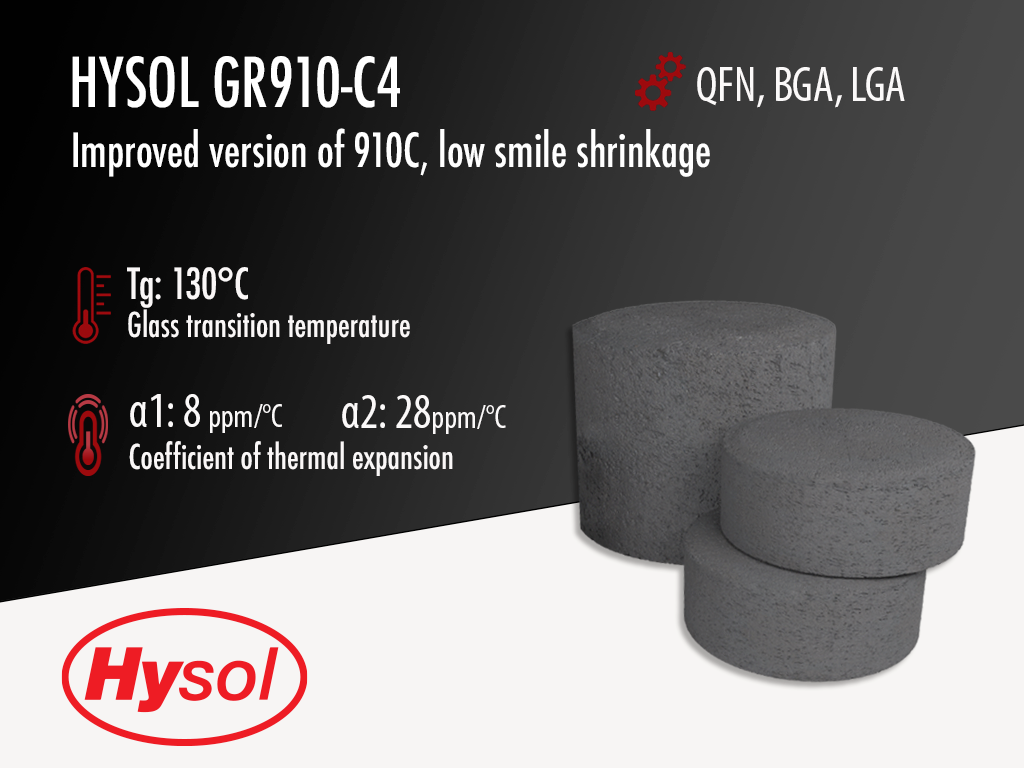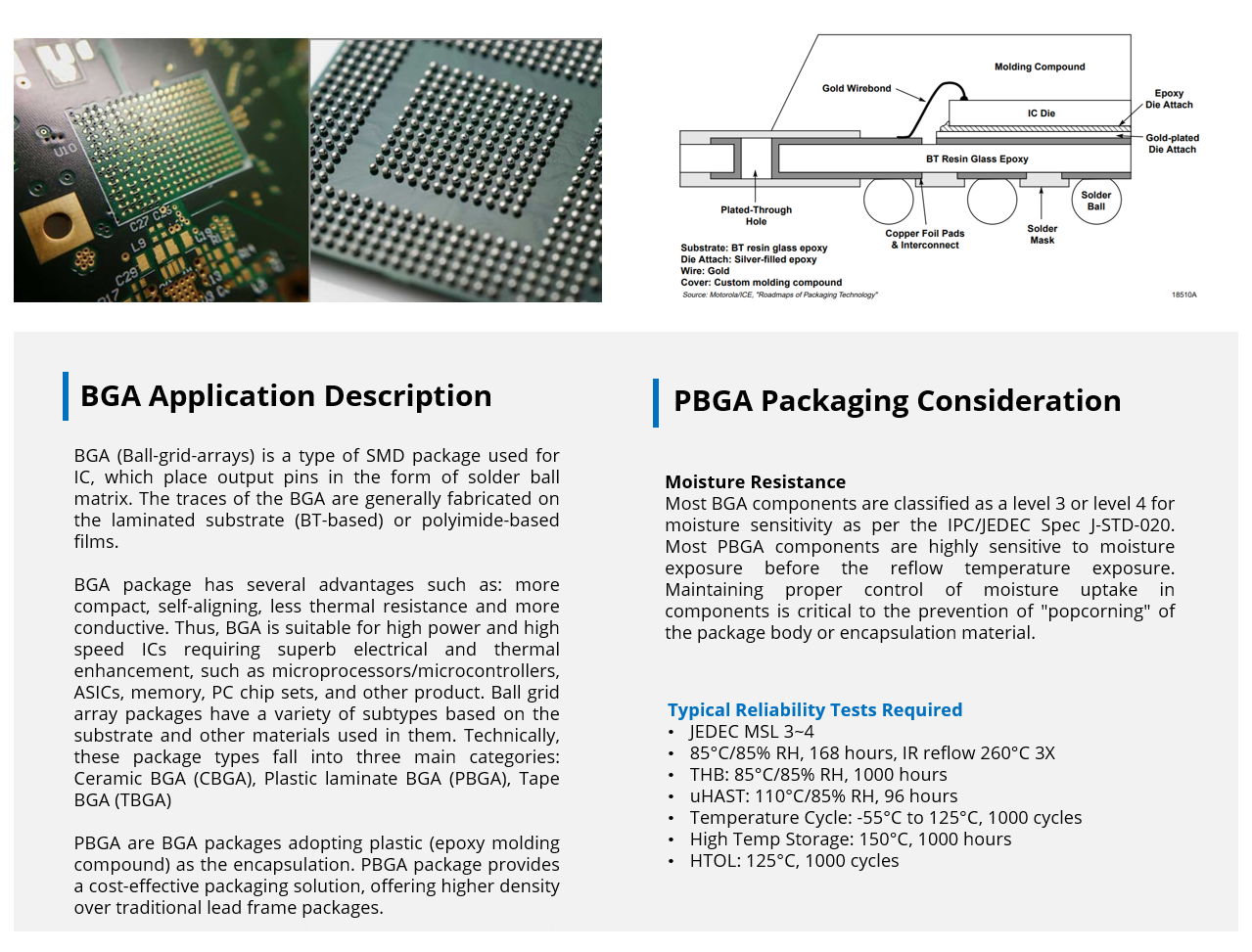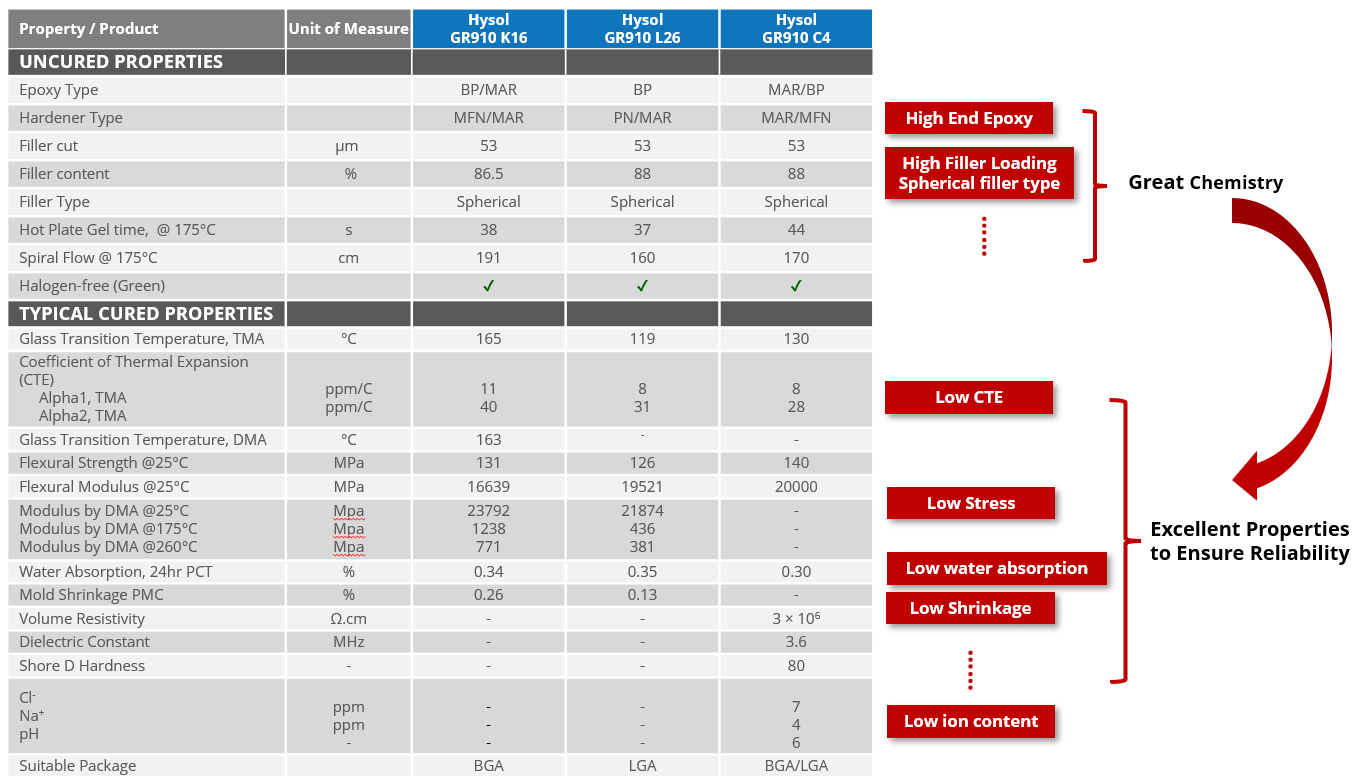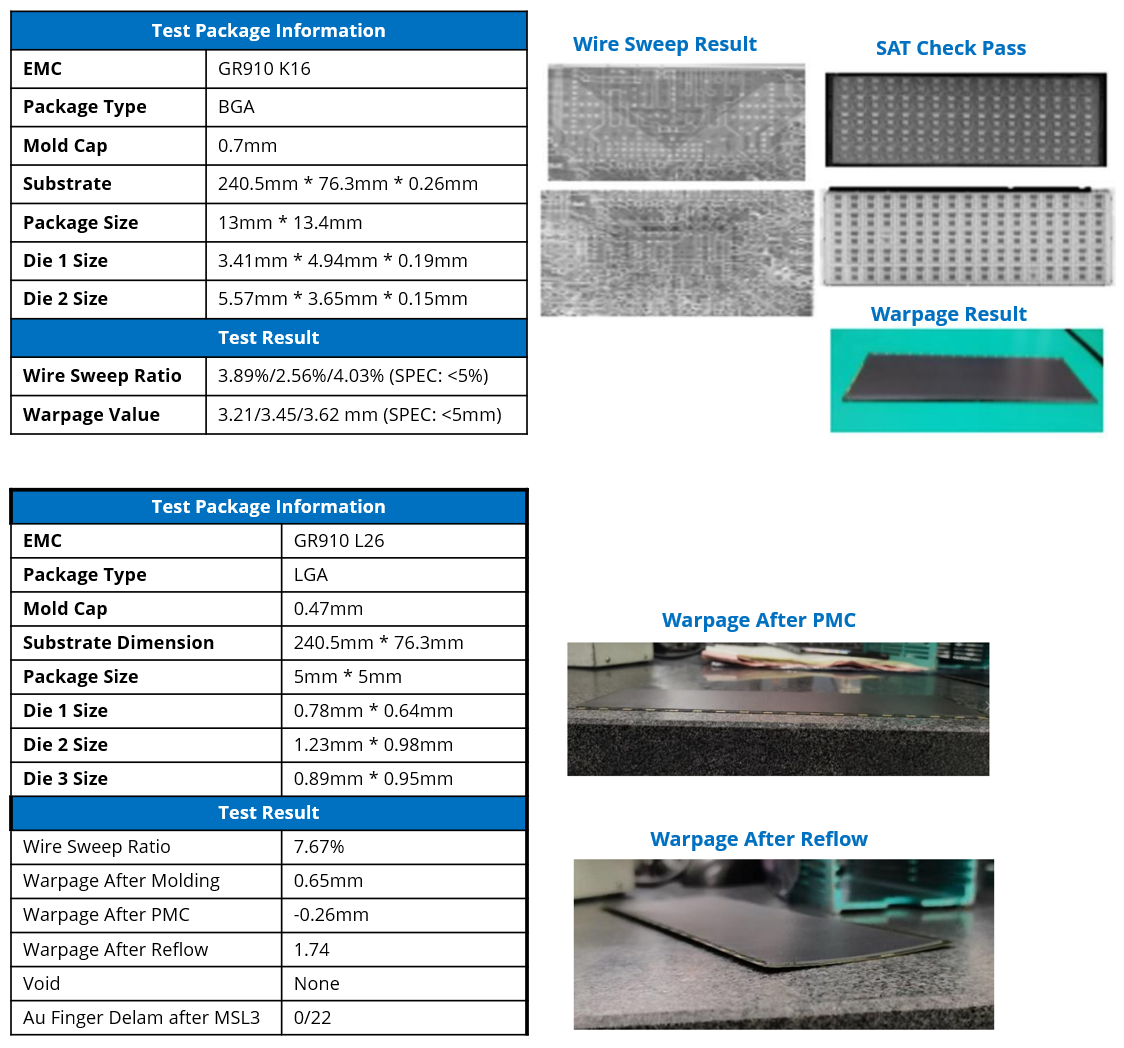Hysol GR910-C4 |Black Epoxy Mold Compound
Harmonization Code : 3907.30.00.40 | Epoxy Mold Compounds containing by weight more than 70 % silicon dioxide
Main features
- Improved version of GR910-C
- Lower smile warpage
- Smaller cut size (53um)
Product Description
Hysol GR910-C4 is an improved version of GR910-C. This black, epoxy, semiconductor grade molding compound is designed for Memory ball grid arrays (BGA) and land grid arrays (LGA). Its small spherical silica cut (cut size of 53um), offers high fluidity and low smile shrinkage that aids a very advanced warpage control.
There are two main differences between Hysol GR910-C4 and GR910-C.
- The first one is the filler cut size: C4 cut size is 53microns; C cut size is 75 microns. When a package design has very narrow gaps (100microns), C4 will be a better candidate and have better filling performance than C.
- The second and maybe most important difference between them is the warpage performance. C4 has smaller smile warpage than C with everything that entails.
Hysol GR910-C4 is a halogen free, environmentally friendly compound with good electrical performance that meets UL 94 V-0 Flammability at 1/8 inch thickness. Main features are summarized:
Moldability (Check the test results)
- Small filler cut (53um) to have good filling performance
- Good fluidity to prevent wire sweep (W/S) failures
Reliability
- Low shrinkage ratio
- Low moisture absorption
- Excellent warpage control during PMC and reflow process
- Meet MSL3 @260°C requirements
- Proven reliability performance on BGA/LGA package
Check the BGA package key considerations.
Check GR910 series comparison
Technical Specifications
| General Properties | |||||||||
| Color Color The color | Black | ||||||||
| Filler Content | 88 % | ||||||||
| Specific Gravity Specific Gravity Specific gravity (SG) is the ratio of the density of a substance to the density of a reference substance; equivalently, it is the ratio of the mass of a substance to the mass of a reference substance for the same given volume. For liquids, the reference substance is almost always water (1), while for gases, it is air (1.18) at room temperature. Specific gravity is unitless. | 2 | ||||||||
| |||||||||
| Physical Properties | |||||||||
| Spiral Flow @ 175°C | 170 cm | ||||||||
| Chemical Properties | |||||||||
| Moisture absorption | 0.3 % | ||||||||
| Mechanical Properties | |||||||||
| |||||||||
| |||||||||
| Electrical Properties | |||||||||
| Volume Resistivity Volume Resistivity Volume resistivity, also called volume resistance, bulk resistance or bulk resistivity is a thickness dependent measurement of the resistivity of a material perpendicular to the plane of the surface. | 3.0x1016 Ohms⋅cm | ||||||||
| Thermal Properties | |||||||||
| |||||||||
| |||||||||
| Glass Transition Temperature (Tg) Glass Transition Temperature (Tg) The glass transition temperature for organic adhesives is a temperature region where the polymers change from glassy and brittle to soft and rubbery. Increasing the temperature further continues the softening process as the viscosity drops too. Temperatures between the glass transition temperature and below the decomposition point of the adhesive are the best region for bonding. The glass-transition temperature Tg of a material characterizes the range of temperatures over which this glass transition occurs. | 130 °C | ||||||||
| Thermal Conductivity Thermal Conductivity Thermal conductivity describes the ability of a material to conduct heat. It is required by power packages in order to dissipate heat and maintain stable electrical performance. Thermal conductivity units are [W/(m K)] in the SI system and [Btu/(hr ft °F)] in the Imperial system. | 1 W/m.K | ||||||||
| Curing Conditions | |||||||||
| |||||||||
| |||||||||
| Transfer Pressure | 40 - 85 kg/cm2 | ||||||||
| Transfer Time | 7 - 15 s | ||||||||






